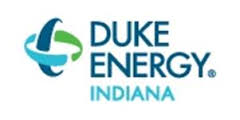| 672-solar panel project for elementary school gets OK from Lowell Town Council |
| Melanie Csepiga, Times of Northwest Indiana CorrespondentLOWELL — The installation of 672 solar panels at Three Creeks Elementary School will begin immediately now that the Lowell Town Council has approved the project.
The Lowell Town Council endorsed an earlier recommendation by the Board of Zoning Appeals to grant a variance to allow the construction. Tri-Creek Schools Superintendent Debra Howe thanked the Town Council and said the school district appreciates the partnership with the town. Because the area in which the school is located is zoned residential and the use of solar panels is not a designated use in that zone, a variance was required. The Board of Zoning Appeals voted unanimously last month to give a favorable recommendation to the council, but only after hearing presentations on whether Tri-Creek's request met required criteria. While James Mandon, a planning consultant to the town, disagreed that all criteria was met, the BZA members apparently accepted the school district's position that the lack of a solar panel ordinance meant another ordinance permitting wind energy in all zones in the town could be used. Howe said the district will seek a variance next month for a solar panel array at Oak Hill Elementary School, 425 South Nichols St. as part of Tri-Creek's district-wide solar energy plan. The Three Creeks solar panel array will be on about one-fourth of an acre in eight rows of pole-mounted panels. Each panel is 18 square feet and will generate 34.6 volts and 7.10 amps. A 6-foot tall chain link fence will surround and enclose the area. Howe told the BZA in May the solar panel arrays are planned to not only save on energy costs, but serve as an outdoor classroom of sorts as they did at Lowell Middle School. Alternative energy science educational kits for problem solving will be used a well as a mock solar array for experiments. |
Solar Trade Case, With Trump as Arbiter, Could Upend Market
Technicians installing solar panels in Miami last year. A glut of low-cost supplies from overseas has driven down the price of the panels, making it difficult for American manufacturers to compete. Credit Scott McIntyre for The New York Times
Solar Trade Case, With Trump as Arbiter, Could Upend Market
Rooftop Solar Systems Provide Economic Benefits to Michigan’s Electric Grid
IEI Report: Rooftop Solar Systems Provide Economic Benefits to Michigan’s Electric Grid
Robust Analysis Urged in Upcoming MPSC Study
LANSING – Utility customers with rooftop solar systems, known as solar distributed generation (DG), are providing economic support to Michigan’s electric grid and should not be overcharged to support it. That is among the findings of an analysis by the Institute for Energy Innovation (IEI) entitled, Solar Energy in Michigan: The Economic Impact of Distributed Generation (DG) on Non-Solar Customers.
The report was completed in advance of a study to be undertaken by the Michigan Public Service Commission (MPSC) required under Michigan’s new Clean and Renewable Energy and Energy Waste Reduction Act.
“The vast majority studies on the value of solar conclude that customers with solar DG systems who participate in ‘net metering’ programs represent a net benefit to all utility customers and the electric grid as a whole,” said Dan Scripps, president of IEI. “While they receive credits that reduce or eliminate their monthly utility bills, the energy they generate provides real benefits to the power system and should be considered when evaluating the impact of solar DG.”
Under the new law, which took effect April 20, 2017 the MPSC is tasked with developing a new rate structure that considers whether net metering customers are able to avoid paying for grid support services on which they rely and, therefore, are being subsidized by non-solar customers. The new rate structure must reflect the equitable cost of service that ensures fairness for ratepayers, with and without solar DG systems.
“Our report found that customers with rooftop solar systems are not only paying their fair share, they’re actually helping to reduce costs for their neighbors as well,” said Scripps. “Specifically, the benefits of solar DG exceed the retail cost of electricity and the value of solar is greater than the compensation solar DG customers receive under net metering programs.
“It’s hard to justify adding additional costs to those already providing more benefit than they receive,” he added.
In an effort to support the development of the MPSC study, IEI conducted a meta-analysis that
(1) summarizes the national data related to evaluating the value of solar to the overall grid; and
(2) outlines best practices for compensating net metering customers. The IEI evaluated more than 40 solar value studies from across the nation as well as nine additional studies not included in any previous meta-analyses.
A majority of the studies cited in the IEI report found:
- Customers participating in net metering programs represent a net benefit to the grid.
- While net metering customers receive credits that reduce or eliminate their monthly utility bills, solar DG provides measurable and monetizable benefits to the power system that should be considered when evaluating the true impact of solar DG and net metering on all ratepayers.
- Solar DG both reduces demand for power from the utility and provides power to the grid when the systems generate more power than is used at a residential or commercial site. This surplus power is generated at or near peak times when the cost to the utility of procuring additional power is most expensive.
- Net metering represents an attempt to balance the true costs and benefits of the energy being produced and that which is consumed in a way that is simple, fair, and convenient for both the utility and its customers. Any new rate structure covering distributed generation systems should fully compensate customers for the value their systems provide.
Based on these findings, the IEI report encourages the MPSC to:
- Conduct a robust analysis of the value of solar using the standard valuation methodology developed by the Interstate Renewable Energy Council (IREC) to allow for a transparent accounting and applies-to-apples comparison of the costs and benefits of solar DG with other studies, consistent with a recent MPSC order that called for issues associated with distributed generation to be examined as part of the MPSC’s distributed generation and net metering study.
- Recognize that the majority of value-of-solar studies found that customers participating in net metering programs represent a net benefit to the grid.
- Develop rate structures that fully-compensate solar DG customers for the value of the energy they produce.
- Ensure that stakeholders have access to location-specific utility data as part of the development of new rate structures for customers with distributed generation systems, allowing for full and fair consideration of location factors that can affect solar valuations.
For a full copy of the IEI report visit: www.instituteforenergyinnovation.org
About the Institute for Energy Innovation:
The Institute for Energy Innovation (IEI) is a Michigan-based non-profit that works to promote greater public understanding of advanced energy and its economic potential for Michigan, and to inform the policy and public discussion on Michigan’s energy challenges and opportunities. IEI provides independent and unbiased research, conducts stakeholder and community engagement, organizes informational and networking events, and develops recommendations to spur public debate.
NC HB 589 would revise PURPA procurement rules if signed by Gov. Cooper
RFP: Duke Energy Seeks Wind Power for Indiana Customers
RFP: Duke Energy Seeks Wind Power For Indiana Customers
Duke Energy has issued a request for proposals (RFP) for up to 200 MW of wind energy for its Indiana customers.
Specifically, the company is looking for proposals in the form of power purchase agreements for a five- to 20-year contract term, projects that are built by a developer and then transferred to Duke Energy, or purchases of existing facilities.
Further, the projects – with a minimum of 50 MW each – must be located within the Midcontinent Independent System Operator (MISO) region, and a preference will be given to a MISO Zone 6 (Indiana) location. In addition, the delivery of wind energy must start on or before Dec. 31, 2020.
“One of our goals is to diversify our regulated power generation supplies,” says Duke Energy Indiana’s president, Melody Birmingham-Byrd. “This request for proposals gives developers the opportunity to sell to us completed projects or to pursue projects themselves and enter into power purchase agreements with Duke Energy.”
As the state’s largest electric supplier, Duke Energy Indiana provides about 6.8 GW of owned electric capacity to approximately 820,000 customers in a 23,000-square-mile service area.









